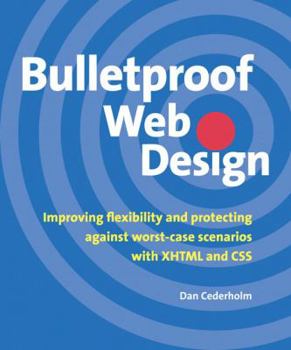Bulletproof Web Design: Improving Flexibility and Protecting Against Worst-Case Scenarios with XHTML and CSS
Select Format
Select Condition 
Book Overview
No matter how visually appealing or content-packed a Web site may be, if it's not adaptable to a variety of situations and reaching the widest possible audience, it isn't really succeeding. In... This description may be from another edition of this product.
Format:Paperback
Language:English
ISBN:0321346939
ISBN13:9780321346933
Release Date:January 2006
Publisher:New Riders Publishing
Length:270 Pages
Weight:1.26 lbs.
Dimensions:0.5" x 7.4" x 9.0"
Customer Reviews
customer rating | review
There are currently no reviews. Be the first to review this work.













